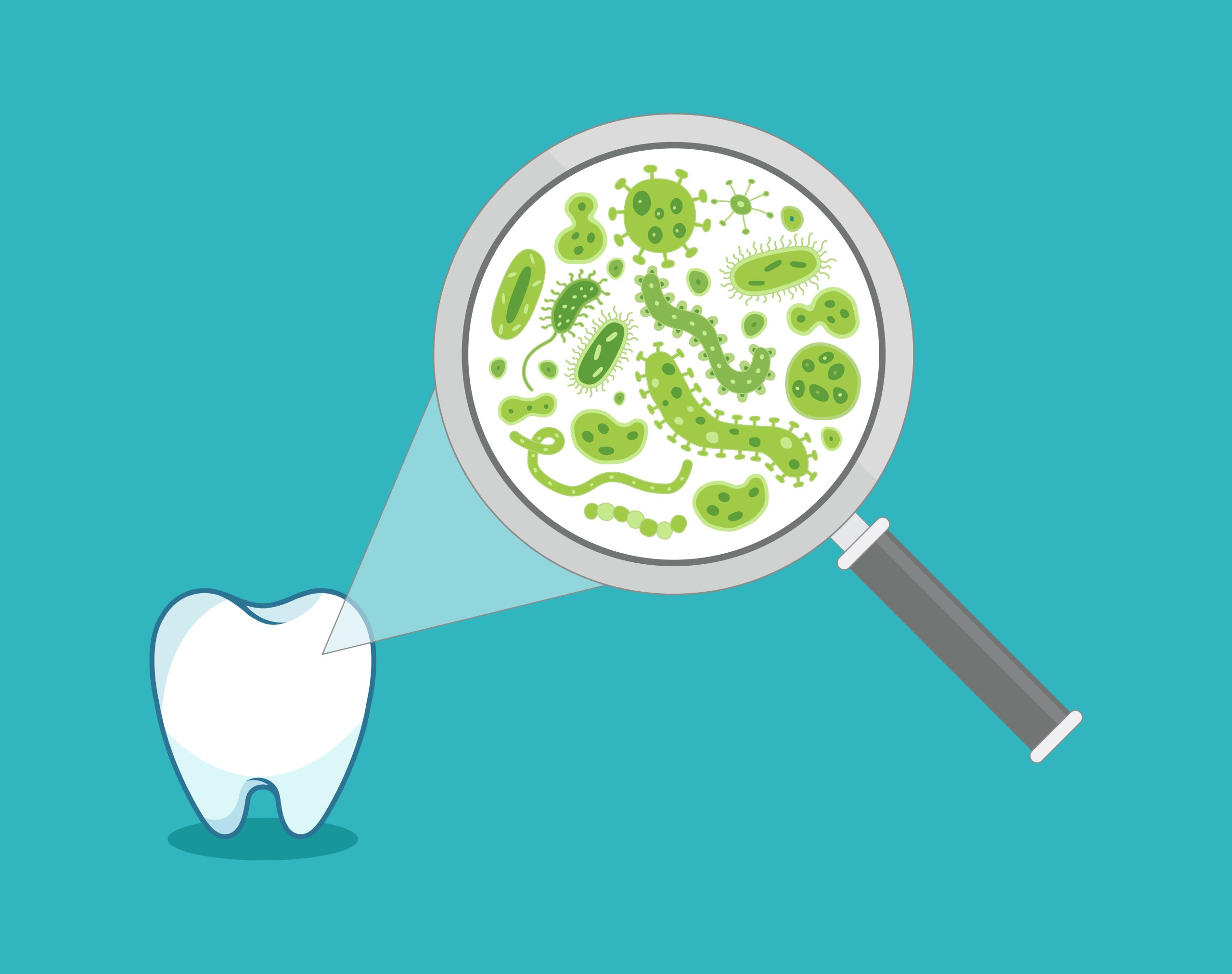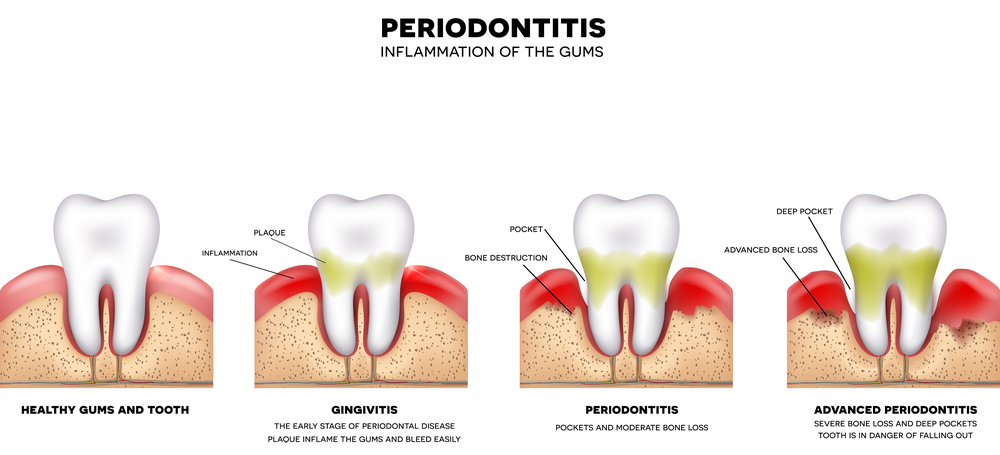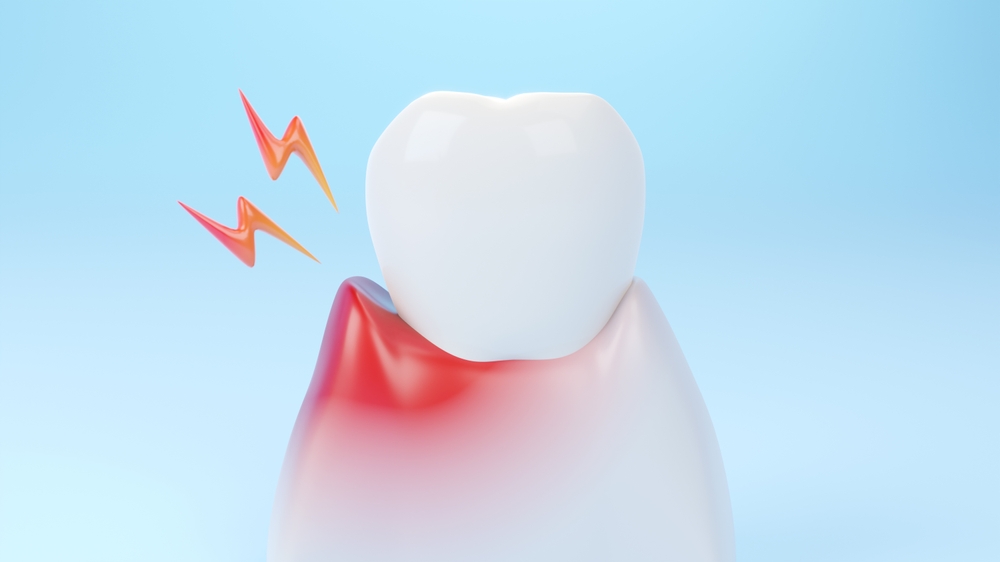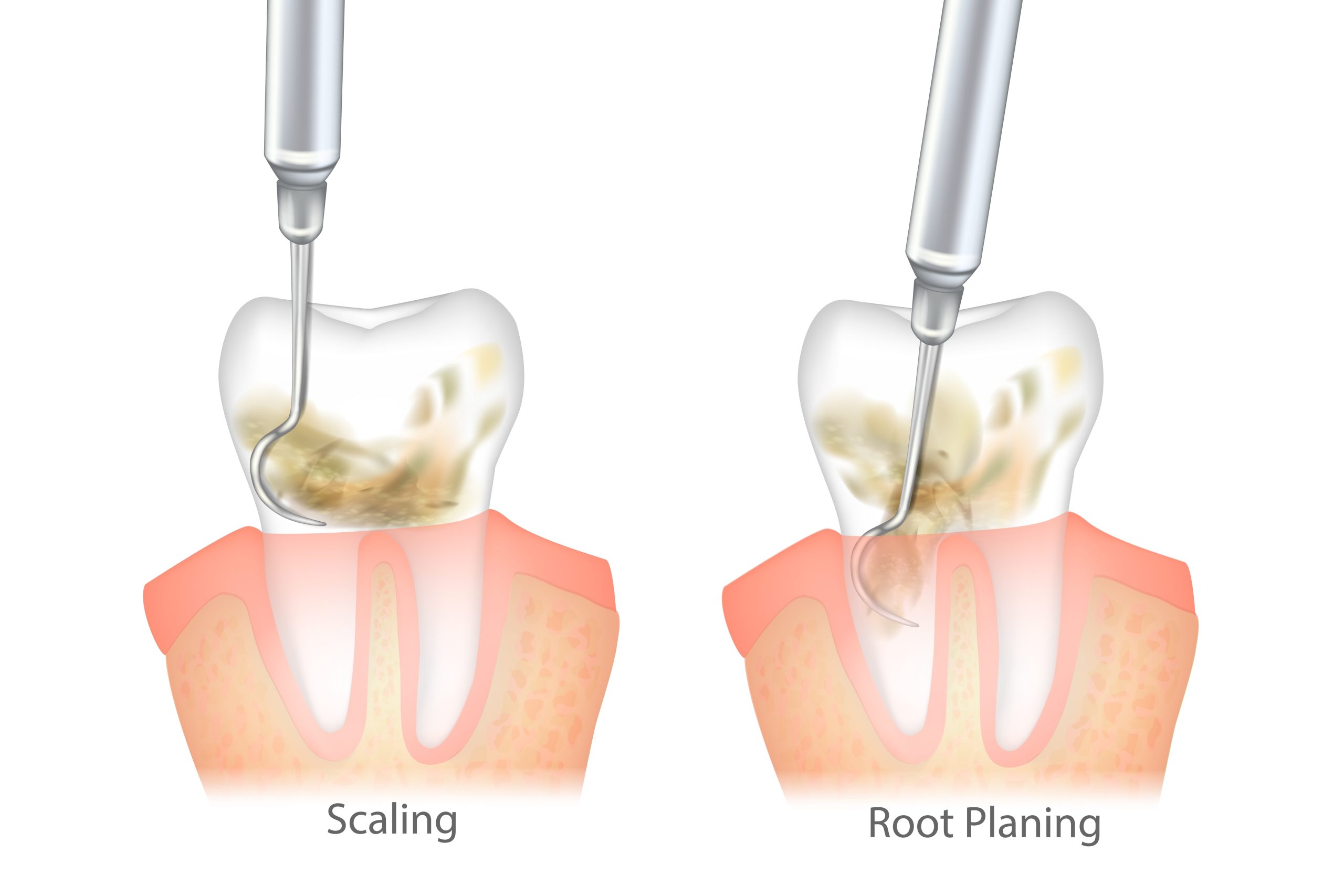1812 E. Broadway St.
Pearland, TX 77581
Periodontal disease, also known as gum disease, is a common oral health problem that affects millions of people across the country. If left untreated, it can cause serious and permanent damage to the gums, bones, and teeth. That’s why it’s important to understand what periodontal disease is, what its symptoms are, and how it can be treated. Read the handy guide provided by our Pearland, TX Dentists to learn about gum disease and how to keep your oral health protected for years to come.
Periodontal disease is caused by the buildup of plaque, a sticky film of bacteria, on the teeth and gums. If left untreated, gum disease can lead to tooth loss and other serious health issues that may require more expensive treatment. That’s why understanding the signs and symptoms of gum disease is important in early intervention.
The most common cause of periodontal disease is bacterial build-up, usually in the form of plaque and tartar. Plaque is a whitish or yellowish sticky substance that occurs due to leftover food particles and bacteria in your mouth. The substance gathers around your teeth and gums and if left alone, hardens into tartar. Tartar, or calculus, can only be removed with professional dental cleanings, which is why visiting your dentist for biannual checkups is important.
The bacteria in both plaque and tartar feed on the sugars in your mouth and produce acid as waste. The bacteria eat away at gum tissue and the other structures supporting your teeth.
Certain factors can increase your risk of developing gum disease including:
Periodontal disease progresses through several stages, starting with gingivitis and ultimately leading to tooth loss if left untreated. Here is a detailed overview of the different stages of gum disease:
Gingivitis is the earliest stage of periodontal disease and is characterized by inflammation and redness of the gums. It is caused by a buildup of plaque and tartar along the gum line, which triggers an immune response that results in said inflammation.
At this stage, the disease is still reversible and can be treated with professional cleanings, improved oral hygiene habits, and antibiotics if caught early.
If left untreated, gingivitis will progress to periodontitis, a more advanced stage of the disease. At this stage, the gum tissue begins to pull away from the teeth, forming pockets where bacteria can grow and thrive. As the pockets deepen, the gum tissue and bone that support the teeth become destroyed, leading to tooth loss.
Moderate periodontitis is characterized by significant damage to the gum tissue, bone, and other supporting structures of the teeth. At this stage, the teeth may become loose and eventually fall out, and the infection can spread to other parts of the body, increasing the risk of systemic health problems like heart disease.
End-stage periodontitis is the final stage of the disease and is characterized by almost complete loss of the gum tissue, bone, and supporting structures of the teeth. At this stage, the teeth may become completely loose, fall out, or require extraction.
One of the best things you can do for your smile is to be educated about the different stages of periodontal disease. Signs might be easy to miss in the early stages, but paying close attention and calling our Pearland dental office as soon as you notice changes can make all the difference.
Signs of periodontal disease include:
If you’re experiencing any of the above symptoms, then you should contact Pearland Dental Group by dialing (281) 993-9900. Our Pearland dentists can prescribe effective periodontal therapy options.
Pearland Dental Group offers a variety of periodontal therapy options, tailored to your unique needs. Root planing and scaling can help remove bacterial build-up from beneath your gums, while open flap debridement allows us to reach the deepest bacterial pockets. We may prescribe additional treatments either in or out of our office, such as gum contouring and antibiotics depending on your case.
If you live in Pearland, TX, and are experiencing symptoms of periodontal disease, it is important to find a dentist who is skilled in the treatment of this condition. A dentist who properly understands gum disease will be able to diagnose the stage of the disease and develop a treatment plan that is tailored to your specific needs.
To find a periodontal disease dentist near you, you can start by searching online for dentists in Pearland, TX, who are knowledgeable about periodontal disease therapy. You can also ask for recommendations from friends and family. Pearland Dental Group’s doctors have years of experience handling periodontal disease at any stage.
Periodontal disease is not contagious. However, evidence suggests that the bacteria that cause periodontal disease can be passed from person to person through contact. To be on the safe side, if you have or suspect you have periodontal disease, don’t share your utensils or drinks with other people.
Unfortunately no, gum tissue and bone do not grow back on their own. These issues have to be corrected with surgical procedures like gum grafting and bone grafting. The best way to preserve your gum and bone tissue is to protect yourself against oral health issues such as gum disease and seek treatment as soon as your symptoms are identified.
Taking simple steps can help prevent gum disease from taking root in the first place:
Periodontal disease on its own isn’t usually life-threatening. However, more advanced stages of gum disease can significantly damage your smile and make you more vulnerable to other more serious diseases. That’s why it’s important to seek professional treatment as soon as you notice possible signs of gum disease.
At Pearland Dental, we understand the importance of preventing and treating gum disease. Our team of experienced dental professionals is dedicated to providing the highest quality of care and support to help you maintain good oral health.
If you are concerned about gum disease or would like to learn more about your treatment options, we encourage you to get in touch with us today by dialing (281) 993-9900. You can also schedule an appointment by clicking the button below and one of our friendly team members will get back to you shortly. Our dentists are accepting new and returning patients from Pearland and surrounding areas such as Fresno, Houston, Alvin, and League City, TX.





Our clinic offers all kinds of services and constantly study new
technology to add new custom services to the list
Phone: (281)993-9900
Address: 1812 E. Broadway St. Pearland, TX 77581
Copyright © 2021 Pearland Dental Group | Managed by Now Media Group